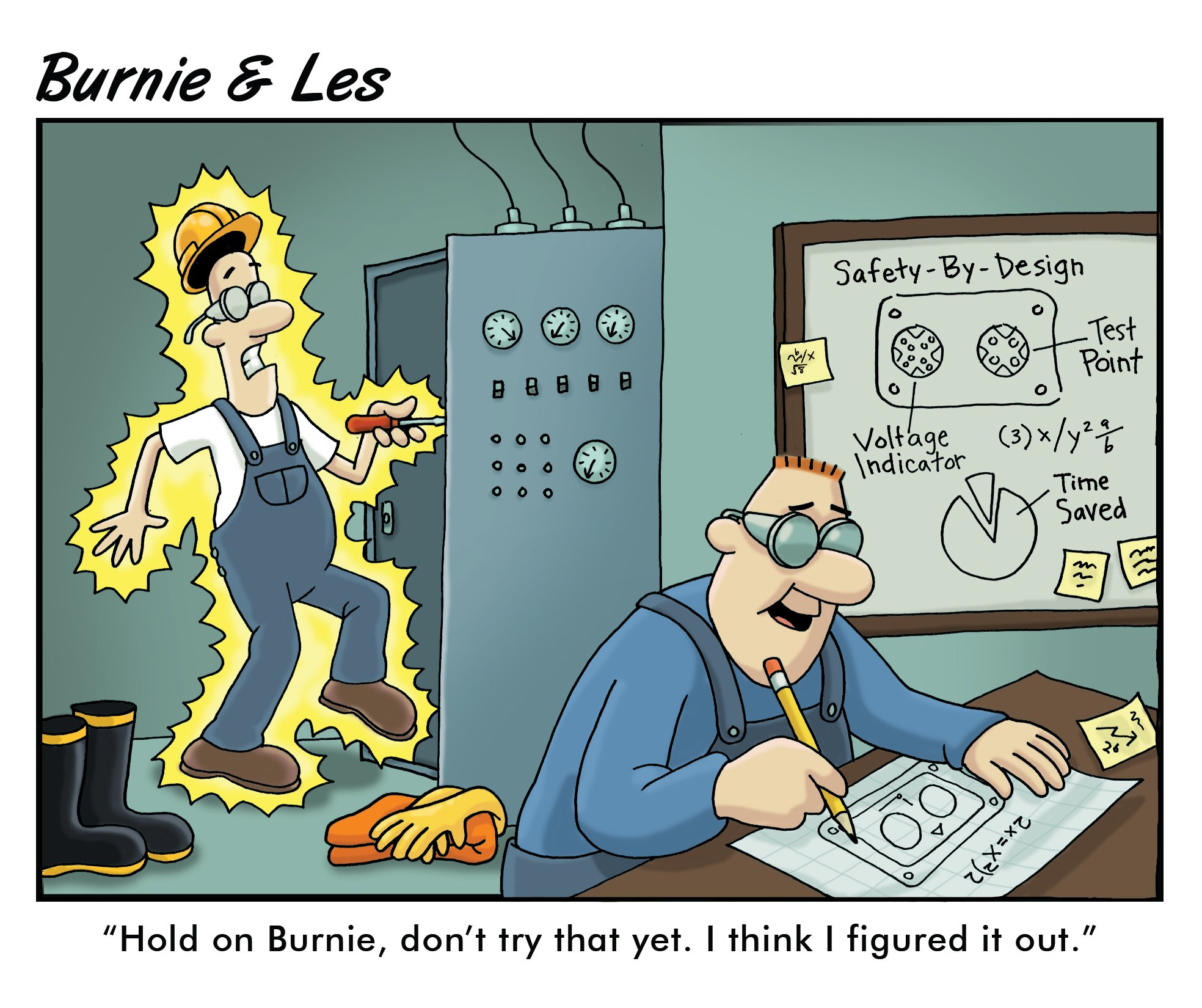
Unlocking Safety and Compliance: The Essential Guide to LOTO and PESDs
In the realm of electrical safety, the Lockout/Tagout (LOTO) process stands as a critical barrier against workplace accidents and a cornerstone of compliance with Occupational Safety and Health Administration (OSHA) standards. The recent updates in the NFPA 70E 2024 Edition further underscore the importance of meticulous adherence to LOTO procedures to mitigate electrical hazards. This comprehensive LOTO checklist delves into the seven essential steps as defined by the NFPA 70E 2024 Edition, the reality of executing these steps in the field, and how Permanent Electrical Safety Devices (PESDs) play a pivotal role in enhancing safety and productivity.
NFPA 70E 2024 Edition: A Closer Look at the LOTO Steps
The NFPA 70E 2024 Edition outlines a systematic process for establishing and verifying an electrically safe work condition. Before any work begins, it's crucial to determine all possible sources of electrical supply to the equipment in question, consulting up-to-date drawings, diagrams, and identification tags. Load current must be properly interrupted before opening the disconnecting device(s) for each source, ensuring a clear path to safety. Applying LOTO devices involves the application of lockout/tagout devices according to documented and established procedures.
It's imperative to visually confirm that all blades of the disconnecting devices are fully open or that drawout-type circuit breakers are withdrawn to a safe position. Stored electrical energy must be safely released to prevent unexpected energization. Similarly, stored non-electrical energy must be safely managed to avoid accidental energization. Finally, using an adequately rated portable test instrument, each phase conductor or circuit part at the point of work must be tested for the absence of voltage, ensuring the area is safe for work.

120.6 Process for Establishing and Verifying an Electrically Safe Work Condition
Establishing and verifying an electrically safe work condition shall include all of the following steps, which shall be performed in the order presented, if feasible:
- Determine all possible sources of electrical supply to the specific equipment. Check applicable up-to-date drawings, diagrams, and identification tags.
- After properly interrupting the load current, open the disconnecting device(s) for each source.
- Wherever possible, visually verify that all blades of the disconnecting devices are fully open or that drawout-type circuit breakers are withdrawn to the test or fully disconnected position.
- Release stored electrical energy.
- Block or relieve stored nonelectrical energy in devices to the extent the circuit parts cannot be unintentionally energized by such devices.
- Apply lockout/tagout devices in accordance with a documented and established procedure.
- Use an adequately rated portable test instrument to test each phase conductor or circuit part at each point of work to test for the absence of voltage. Test each phase conductor or circuit part both phase-to-phase and phase-to-ground. Before and after each test, determine that the test instrument is operating satisfactorily through verification on any known voltage source.
What is LOTO in Practice?
What is the full LOTO meaning? Each step of the LOTO process presents unique challenges and demands unwavering attention to detail. From identifying all potential energy sources, which can be complicated by outdated or inaccurate schematics, to the physical application of LOTO devices, the process requires a high level of expertise and diligence. Visual verification and testing for the absence of voltage are critical to confirming that equipment is indeed in an electrically safe state, yet these steps are often hindered by equipment design or location.
Importance of OSHA Compliance
Following the LOTO procedure as outlined not only ensures compliance with OSHA regulations but significantly reduces the risk of electrical accidents. Non-compliance can result in severe penalties and, more importantly, endanger the lives of workers. The meticulous execution of each LOTO step is essential for creating a safe working environment and protecting employees from electrical hazards.

Enhancing LOTO with PESDs
PESDs such as voltage presence indicators and high impedance protected test points offer a revolutionary approach to electrical safety. PESDs aim to assist users in avoiding LOTO violations by enhancing compliance. These devices integrate seamlessly into the LOTO procedure, providing several key benefits:
- Voltage Indicators: NFPA 70E 120.6(4) – PESDs with voltage presence indicators use LEDs that illuminate when hazardous voltage is present until stored electrical energy is released (NFPA 70E 120.6(4)), providing a warning of hazardous voltage that may harm maintenance personnel believing equipment to be in a depowered state. Voltage indicators display the presence of hazardous voltage through LEDs, serving as a constant visual verification tool until electrical energy is fully discharged.
- Test Points: NFPA 70E 120.6(7) – PESDs with high impedance protected test points (i.e. Safe-Test Point, Voltage Test Station, & ChekVolt) allow for safe, external testing of phase-to-phase and phase-to-ground voltages using an adequately rated portable test instrument. This ensures a truly electrically safe work condition without exposure to live components.
By incorporating PESDs into the LOTO process, organizations can enhance safety, streamline procedures, and ensure compliance with safety standards.

To further explore the integration of PESDs into electrical safety practices and the comprehensive steps of the LOTO process, we invite you to download our eBook, "Electrical Safety-By-Design: Save Lives. Increase Productivity." This resource provides in-depth insights into creating safer work environments and optimizing productivity through innovative safety solutions. Enhance your electrical safety knowledge and practices today by embracing the power of PESDs. The journey towards electrical safety is ongoing. By understanding and applying the principles of LOTO and integrating PESDs into your safety protocols, you can safeguard your workforce against electrical hazards and ensure compliance with the latest standards. Stay committed to safety, and let's work together to create a safer workplace for all.
The journey towards electrical safety is ongoing. By understanding and applying the principles of LOTO and integrating PESDs into your safety protocols, you can safeguard your workforce against electrical hazards and ensure compliance with the latest standards. Stay committed to safety, and let's work together to create a safer workplace for all.

